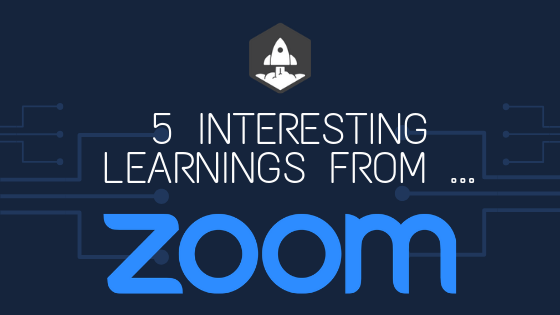
Much has been written about Zoom’s impressive financials as it prepared to IPO, growing > 100% at $425m+ in ARR!
But as part of our new 5 Interesting Learnings series, I thought it might be helpful to go beyond the top line growth and pick out 5 learnings of particular interest to SaaStr founders:
- Zoom has a classic “Small-Medium-Large” customer distribution, currently about 20:50:30. Yes, it has big customers. ~340 customers pay $100k+ a year, comprising 30% of their revenue. But it also gets 22% of its revenue from Very Small Businesses — customers with less than 10 employees. This puts the remaining 50% in the SME/Slightly Bigger Customer category 🙂 This is tough to do in general, this distribution, because the different segments often have much different workflow and other needs. But it’s also a classic pattern for applications where all companies can leverage the same, easy-to-grab functionality to start with.
- Zoom has 140% net revenue retention. This is similar to RingCentral from our last analysis and other leaders. Zoom also shows that yes, this can be done with smaller customers too, not just enterprises.
- 74% of Zoom’s contracts are annual or longer. But the converse is, 26% … aren’t annual. This is pretty consistent with other applications that sell to SMBs as well as larger customers. The learning? Don’t force it. Don’t force 100% of your customers to go annual if they don’t want to. Most will, as you go upmarket. But some won’t want to. That’s OK. Let them buy the way they want to buy. Zoom does. And if they do — so can you.
- Viral and freemium works at scale for Zoom – still. 55% of their $100k+ customers started with a free host session. That’s pretty incredible. Many will tell you freemium and viral don’t scale in SaaS, that they peter out. And that’s often true. But not yet for Zoom.
- Viral and freemium are key to Zoom’s capital efficiency. Much has been made of the fact that Zoom’s R&D costs are low due to significant engineering in China. That’s true, and also interesting. But the most relevant lesson for most of us is how much more capital efficiency SaaS business are with even partial viral customer acquisition. SaaS business often have a low viral coefficient, if they have one at all. At EchoSign, it took us 9 months for 1 paid customer to create another. But even a low viral coefficient can have a profound effect on capital efficiency, driving it up substantially. And a material boost to growth.
It can be tempting to let the SMB side of the business go as you scale. The bigger accounts, with the bigger checks and the longer-term contracts, beckon.
But if you can find a way to go upmarket and still service the SMBs, too — magic can happen.
See, e.g., Zoom.
…
A few others in this series here:
- 5 Interesting Learnings From Zoom When It IPO’d
- 5 Interesting Learnings from Shopify at $3B ARR
- 5 Interesting Learnings From Bill.com’s IPO
- 5 Interesting Learnings From PagerDuty at IPO
- 5 Interesting Learnings From RingCentral. As It Approaches $1b in ARR.
- 5 Interesting Learnings from Zendesk. As It Crosses $1B in ARR.
- 5 Interesting Learnings from HubSpot as It Approaches $1 Billion in ARR
- 5 Interesting Learnings From Slack at $1B in ARR
- 5 Interesting Learnings from RingCentral as It Approached $1B in ARR


